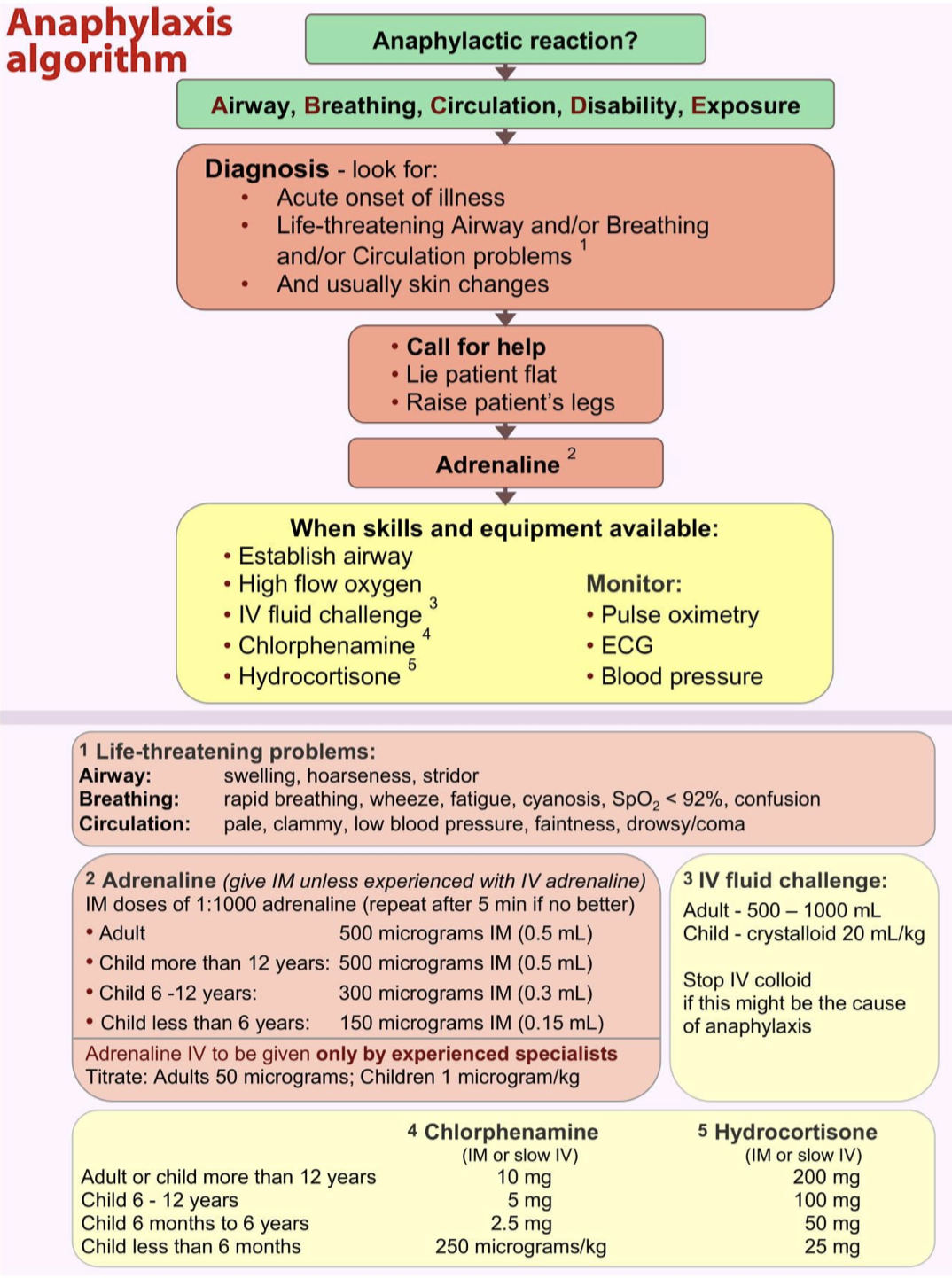Pharmacy Anaphylaxis
Pharmacies that offer a vaccination service for influenza or travel will need to have a suitable anaphylaxis protocol in place. Best practice as described by the Resuscitation Council calls for the administration of intramuscular adrenaline (epinephrine) should the individual(s) show signs and symptoms of an anaphylactic or anaphylactoid reaction.
Pharmacy Anaphylaxis Protocol

Anaphylaxis is likely when all of the following three criteria are met:
-
Sudden onset and rapid progression of symptoms
-
Life-threatening airway and/or breathing and/or circulation problems
-
Skin and/or mucosal changes (flushing, urticaria, angioedema)
Use an Airway, Breathing, Circulation, Disability, and Exposure (the ABCDEs) approach to assess and treat the patient as per guidance set out by the Resuscitation Council (UK) on anaphylactic reactions.
Patients can have either an airway, breathing or circulation problem or any combination.
Airway problems
-
Airway swelling, e.g. throat and tongue swelling
-
Hoarse voice
-
Inspiratory stridor
Breathing problems
-
Shortness of breath
-
Wheeze
-
Confusion caused by hypoxia, patient becoming tired
-
Cyanosis – late sign
-
Respiratory arrest
-
Acute irreversible asthma
Circulation problems
-
Signs of shock, pale, clammy
-
Increased pulse rate
-
Low blood pressure, feeling faint, collapse
-
Decreased conscious level or loss of consciousness
-
Cardiac arrest
Other symptoms can include:
-
Angioedema, commonly eyelids and lips
-
Sense of impending doom
-
Skin and/or mucosal changes. There may be subtle or dramatic changes present in over 80% of reactions. Changes may be just skin, just mucosal or both.
-
Abdominal pain, incontinence, vomiting
-
Erythema
-
Urticaria anywhere on the body. Pale pink/red weals, usually itchy
Disability
Common causes of unconsciousness include profound hypoxia, hypercapnia, cerebral hypoperfusion due to hypotension.
Exposure
To examine the patient properly, full exposure of the body is necessary. Skin and mucosal changes after anaphylaxis can be subtle. Minimise heat loss. Respect the patient's dignity.
Children
Young children rarely faint – sudden loss of consciousness should be presumed to be anaphylaxis in the absence of a strong central pulse.
Hubnet is an online pharmacy information system. We intend to provide healthcare professionals with an online ecosystem to allow for better communication between each other and their patients. Protected by law, the data you enter into this site remains your intellectual property and cannot be used by us. Our goal is to enable you to do more, if you like it you can subscribe for more!
